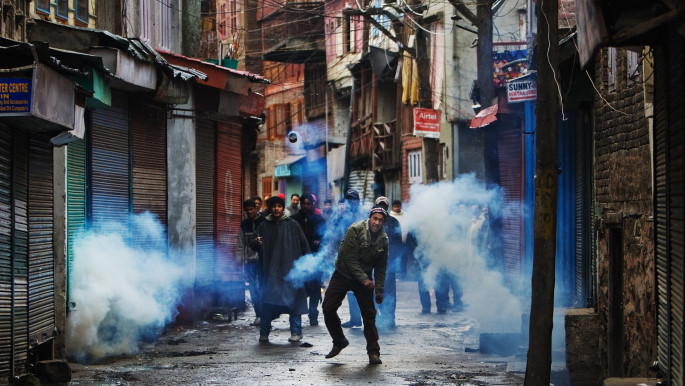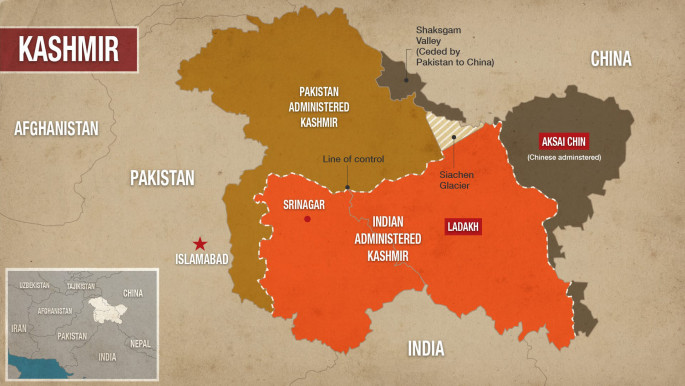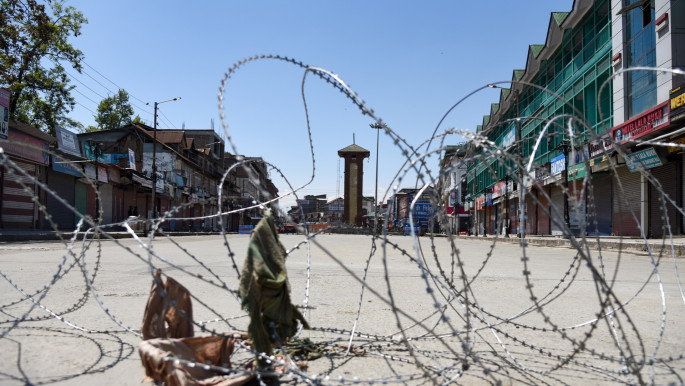How India and China's border face-off could change the contours of Kashmir's conflict
The events that unfolded on the LAC in eastern Ladakh last week may have long term repercussions on the politics and even geography of this inhospitable terrain.
On the night of 15 June, the Indian army clashed on the eastern front with Chinese forces, leaving 20 Indian troops dead and scores injured. Both armies maintained that there was no exchange of gunfire.
As a matter of understanding between the two nuclear powers - the world's two most populous nations - arms are not used by soldiers on this poorly demarcated de facto border. In the recent clash, the Chinese military allegedly used nail-studded rods and rocks to kill the Indian soldiers.
The violent stand-off was the first of its kind to lead to fatalities in at least 45 years. Media reports claimed that the Chinese army also suffered casualties even though China is yet to officially confirm.
The border dispute with China goes back to 1914 when India was still a British colony. Tensions soared in the 1950s between the two countries and a war broke out in 1962. India suffered a humiliating defeat and China captured some mountain passes and a town deep in Indian-controlled territory.
 |
The violent stand-off may have long term repercussions on the politics and geography of the region |  |
The new line drawn between the two countries, as a result of war, came to be known as the Line of Actual Control (LAC) with a length of more than 3,440 kilometers (2,100 miles).
Last year on 21 June, under the leadership of Prime Minister Narendra Modi, India observed a day of Yoga, a physical and spiritual exercise rooted in Hinduism, at the border on the eastern side of the country, with armed forces of India and China joining hands and participating in Yoga sessions together.
 |
|
| 'Palestine in the making': India's new Kashmir domicile law mirrors Israel's settler-colonial blueprint |
The photos from these events made it to the front pages the next day, signalling a better relationship between two countries both racing to be seen as regional powers. This year there was no such joint exercise, even as Modi led his country in observing the occasion with religious and cultural fervour.
But what changed in a year to bring both countries to the brink of war at the border? Observers have pointed out multiple but interlinked factors.
Last year in August, South Asia's most significant political development took place in Kashmir, the longstanding apple of discord in the region.
The Indian government unilaterally revoked Kashmir's semi-autonomous status, enforcing a months-long military lockdown and detaining thousands of politicians, civil society members and even children. Apart from Pakistan, only China condemned the move in clear terms and asked India to reverse the changes.
"India's action is unacceptable and would not have any legal effect," foreign ministry spokeswoman Hua Chunying said immediately after India's decision. China even openly backed Pakistan's position at the United Nations Security Council.
 |
When India revoked Kashmir's status, it did not anticipate the implications of the move on regional political dynamics |  |
The Himalayan Kashmir region is sandwiched between India and Pakistan and some areas on the eastern side are under China's control. The dispute goes back to 1947, when India and Pakistan were formed as the British ended their colonial rule in the region. Kashmir, a Muslim majority state ruled by a Hindu local ruler, Hari Singh, was marred by conflict.
Singh was sympathetic towards India while the majority of the population supported Pakistan. As a rule of partition, Muslim-majority areas would go to Muslim Pakistan and the rest would join together to form what was then called the Union of India. 
There are regular skirmishes in Kashmir on its western front between India and Pakistan on the ceasefire line, known as the Line of Control. Hardly a week goes by without mortar shells or bullets being fired. But the violent clash on the eastern side, which mostly remains calm, was surprising.
The flare-up is being seen by many as a direct consequence of India's Kashmir decision, which divided the contested region into two parts bringing them under the direct control of New Delhi. The move also changed the laws on the ground, allowing people from other parts of the country to own property in the region in an attempt to force demographic changes and alter the dynamics of the conflict.
The tensions between the two powers were simmering even as trade continued. "The present situation was triggered by India when they changed the status of Jammu and Kashmir and severed Ladakh from it," Dr Sheikh Showkat, former head of the law department at Central University of Kashmir, told The New Arab. China disputes India's claim on Ladakh, hence "the change of status [of Kashmir] after 5 August made them proactive," he added.
 |
The border dispute with China goes back to 1914 when India was still a British colony |  |
When India revoked Kashmir's status, it did not anticipate the implications of the move on regional political dynamics. "It was amateurish to think that Beijing and Islamabad would not respond strategically to this shrewd stratagem," Professor Sidiq Wahid, a public intellectual and commentator on Kashmir, told The New Arab.
Following the violent clash between Indian and Chinese forces, politicians in Pakistan came out with statements declaring their support for China, which Pakistan brands an "all weather friend". Their reason for taking a side instead of maintaining some degree of neutrality emanates from obvious reasons: India is Pakistan's rival in Kashmir; China is financing a flagship initiative called the China Pakistan economic corridor (CPEC) under the One Belt One Road program, and China backs Pakistan's position at the UNSC vis-a-vis Kashmir.
 |
|
| Read more: India's draconian internet shutdown hinders Kashmir's battle against Covid-19 |
Ibrahim Wani, a professor of South Asian Studies, sees a link between the standoff and India's opposition to China's economic ambitions under CPEC. "These events and casualties are actually symptoms of the developing arc of escalation. This arc runs from Gwadar (a port city in Pakistan being developed under CPEC) to Galwan. The escalation is connected to the competing political economic interests and alignments."
He fears that amidst militarisation of the border the arc of escalation could even lead to nuclear war in the region where "cartographic assertion" can add to the pressure amidst claims and counterclaims over territory.
Dr Showkat, who teaches international law, says China is "not going to be passive spectators in case there is any move by India" over Kashmir.
The experts also say that the situation in the region is adding to complexities of the dispute in which Kashmir can have much more international attention and it will be difficult for India to keep it "limited to the bilateral language". Kashmir is now a triangular dispute, with India, Pakistan and China all active parties fighting over it.
Aakash Hassan is a Kashmiri journalist. Formerly a correspondent with CNN-News18, his work has appeared in The Caravan, TRT World, and PEN/Opp.
Follow him on Twitter: @AakashHassan





 Follow the Middle East's top stories in English at The New Arab on Google News
Follow the Middle East's top stories in English at The New Arab on Google News


